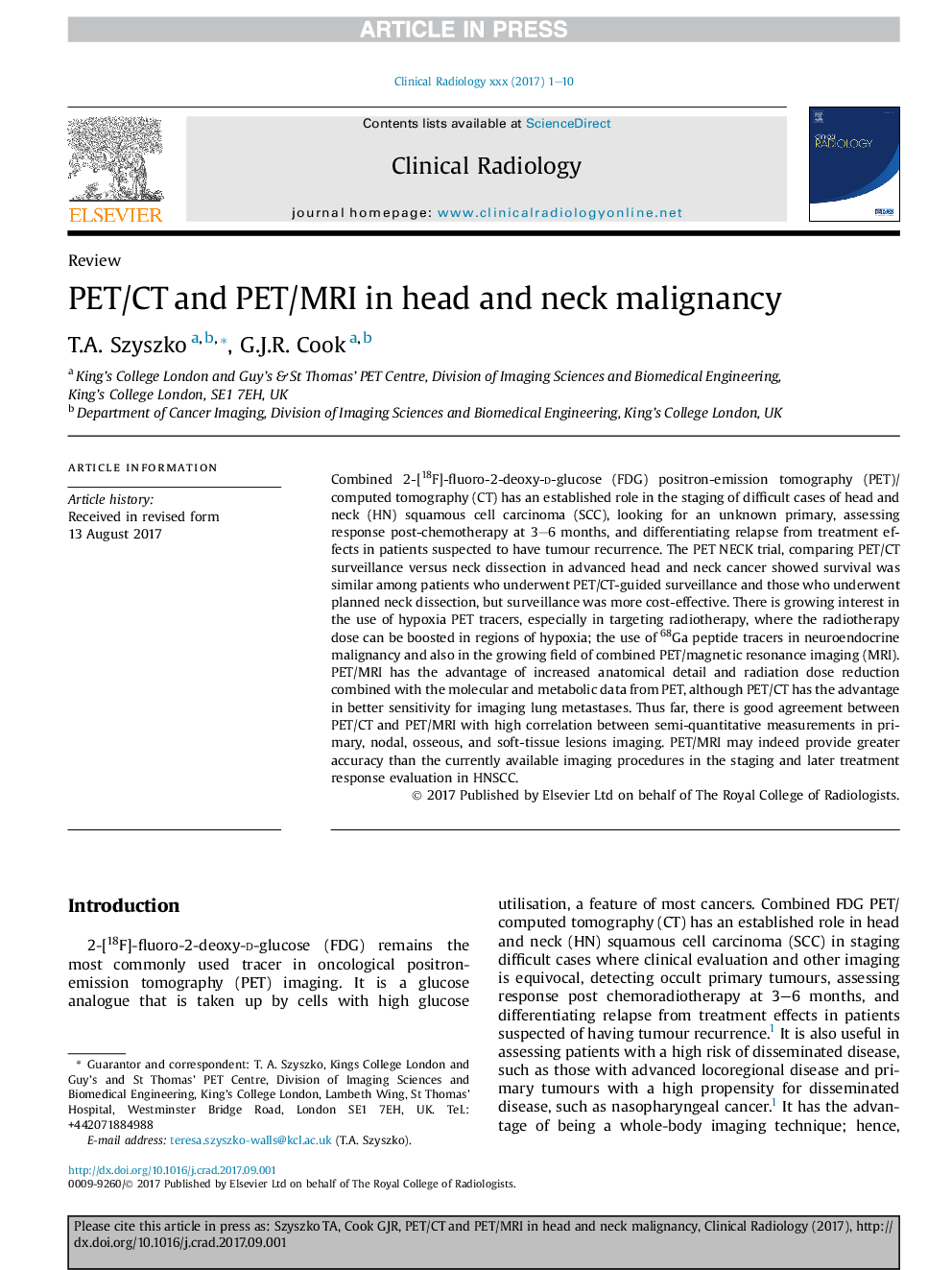| Article ID | Journal | Published Year | Pages | File Type |
|---|---|---|---|---|
| 8786600 | Clinical Radiology | 2018 | 10 Pages |
Abstract
Combined 2-[18F]-fluoro-2-deoxy-d-glucose (FDG) positron-emission tomography (PET)/computed tomography (CT) has an established role in the staging of difficult cases of head and neck (HN) squamous cell carcinoma (SCC), looking for an unknown primary, assessing response post-chemotherapy at 3-6 months, and differentiating relapse from treatment effects in patients suspected to have tumour recurrence. The PET NECK trial, comparing PET/CT surveillance versus neck dissection in advanced head and neck cancer showed survival was similar among patients who underwent PET/CT-guided surveillance and those who underwent planned neck dissection, but surveillance was more cost-effective. There is growing interest in the use of hypoxia PET tracers, especially in targeting radiotherapy, where the radiotherapy dose can be boosted in regions of hypoxia; the use of 68Ga peptide tracers in neuroendocrine malignancy and also in the growing field of combined PET/magnetic resonance imaging (MRI). PET/MRI has the advantage of increased anatomical detail and radiation dose reduction combined with the molecular and metabolic data from PET, although PET/CT has the advantage in better sensitivity for imaging lung metastases. Thus far, there is good agreement between PET/CT and PET/MRI with high correlation between semi-quantitative measurements in primary, nodal, osseous, and soft-tissue lesions imaging. PET/MRI may indeed provide greater accuracy than the currently available imaging procedures in the staging and later treatment response evaluation in HNSCC.
Related Topics
Health Sciences
Medicine and Dentistry
Oncology
Authors
T.A. Szyszko, G.J.R. Cook,
